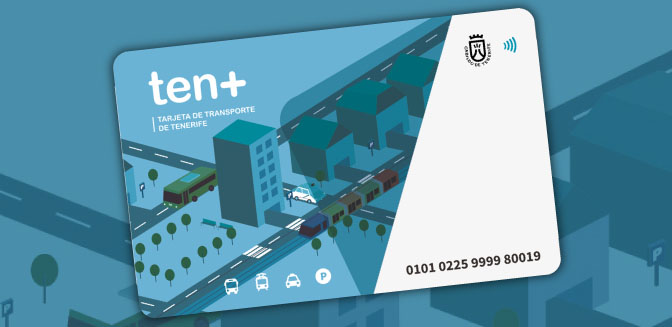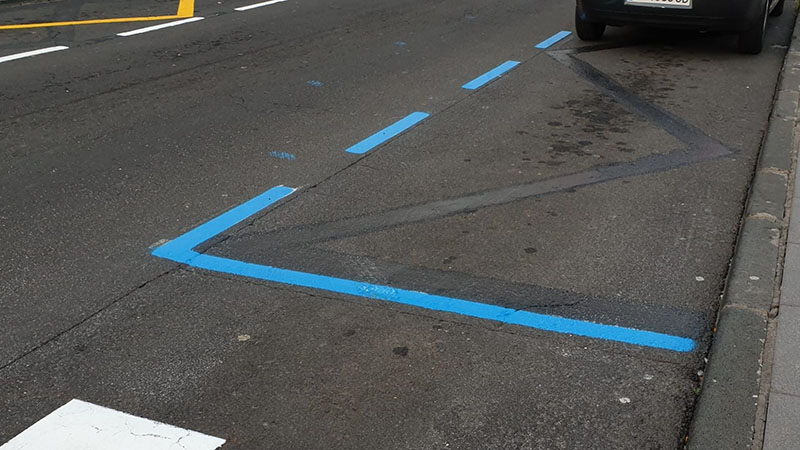Tenerife, the largest island of the Canary archipelago, offers various transportation options for its inhabitants and tourists. Whether you decide to move by car, public transport or bicycle, it is important to know the options available and the regulations in force for a safe and smooth movement. This article will provide you with all the necessary information about the means of transport, the main roads and traffic regulations in Tenerife.
Public Transportation in Tenerife
Tenerife has an efficient public transportation network that facilitates travel between the different areas of the island, both in urban and remote areas.
Buses
The main means of public transport on the island are the guaguas, as buses are known in the Canary Islands. TITSA (Transportes Interurbanos de Tenerife) is the company that operates the bus network and connects most of the towns in Tenerife.
- Main routes: The bus lines cover from large cities such as Santa Cruz de Tenerife and La Laguna, to smaller and touristy towns such as Puerto de la Cruz, Los Cristianos or Adeje. In addition, there are routes that allow access to more rural or tourist areas such as the Teide National Park.
- Fares and tickets: You can pay for your ticket directly on the bus or use the Ten+ Card, a rechargeable card that offers discounts on travel. Tickets vary in price depending on distance, but the card is a more economical option for those who plan to use transit frequently.

Tramway
In the metropolitan area, the streetcar is a fast and comfortable option for getting between Santa Cruz de Tenerife and La Laguna. Line 1 connects these two key points and has strategic stops near hospitals, universities and shopping areas.
- Schedule: The streetcar operates with a regular frequency of 5 to 15 minutes, depending on the time of day.
- Prices and passes: Like the buses, the streetcar also accepts the Ten+ Card, which allows transfers between the two transport systems.

Car Rental in Tenerife
Renting a car is one of the most popular options for tourists who wish to explore the island at their own pace. Tenerife has a wide range of car rental companies at the airports, in the tourist areas and in the main cities.
Main Roads
Tenerife is connected by a good road network that facilitates access to all parts of the island. The most important roads are:
- TF-1 highway: Connects the south of the island, from Santa Cruz to the southern airport (Reina Sofía) and tourist areas such as Los Cristianos, Playa de las Américas and Adeje.
- TF-5 Highway: Connects Santa Cruz with the north of the island, passing through La Laguna and Puerto de la Cruz.
- Road TF-21: Crosses the Teide National Park and connects the northern and southern towns, offering breathtaking views of the volcanic landscape.
Parking
Parking in Tenerife can be a challenge in busy areas, especially in tourist areas and large cities such as Santa Cruz or La Laguna. Many streets have regulated parking zones, marked with blue lines, where you must pay at nearby parking meters.
- Green and blue zones: In urban areas, pay attention to the colors of the lines on the pavement, which indicate whether parking is free or paid. Green zones are usually reserved for residents.

Traffic and Driving Regulations in Tenerife
Driving in Tenerife follows the same rules as in the rest of Spain, although it is important to take into account some specific aspects of the island:
Speed limits
- Highways: The general limit is 120 km/h.
- Secondary roads: The limit varies between 60 and 90 km/h, depending on the stretch.
- Urban areas: The maximum speed in urban areas is 30 to 50 km/h (19 to 31 mph).
Seat belt use
It is mandatory for all occupants of the vehicle, both in the front and rear seats.
Cell phone use
The use of cell phones is strictly prohibited while driving, unless a hands-free system is used. The fines for this infraction are high.
Drinking and driving
The blood alcohol limit is 0.5 g/l for normal drivers and 0.3 g/l for novice drivers (with less than two years of experience) or professional drivers.
Traffic circles
In Tenerife, as in the rest of Spain, traffic circles must always be approached from the right and you must give way to vehicles already in the traffic circle.
Bicycle Transportation
Tenerife is becoming an increasingly popular destination for cyclists thanks to its diverse landscape and challenging routes. The island offers opportunities for both road cyclists and mountain bikers.
Bikeways and Routes
Although there is not an extensive network of bike paths in the cities, there are many recommended routes for cyclists wishing to explore the island. The roads up Teide are particularly popular with cyclists looking for a challenge.
Rules for cyclists
- Cyclists should ride on the shoulder whenever possible.
- The use of helmets is mandatory on interurban roads.
- Groups of cyclists should ride in pairs and never invade more than one lane of the road.
Maritime Transportation
Tenerife also has maritime transport options that connect the island with other islands in the archipelago and the mainland.
Ferries
Several companies offer regular ferry services connecting Tenerife with Gran Canaria, La Gomera, La Palma and other islands. The main operators are Fred Olsen and Naviera Armas, and the ferries depart from the ports of Santa Cruz de Tenerife and Los Cristianos.

Tourist boats
In addition to the ferries, in the ports of Tenerife you can find tourist boats offering dolphin and whale watching excursions, one of the most popular activities among visitors.
Regulations for the Use of Electric Vehicles
The use of electric vehicles is booming in Tenerife. The island has installed a growing network of charging points for electric vehicles, available at gas stations, shopping centers and public parking lots.
- Incentives: The local and regional government offers incentives for the purchase of electric vehicles, which has facilitated their adoption on the island.
- Traffic regulations: Electric vehicles must comply with the same traffic regulations as traditional vehicles, although they may enjoy some advantages, such as free parking in certain areas and access to dedicated lanes on highways.
By way of summary
Getting around Tenerife is easy and convenient, thanks to its public transportation network, the availability of car rental and cycling options. However, it is essential to respect traffic regulations and be aware of the particularities of the local roads to enjoy a safe and trouble-free trip. Whether you prefer to tour the island by bus, car, bicycle or ferry, Tenerife offers multiple ways to get around and discover its wonders.


